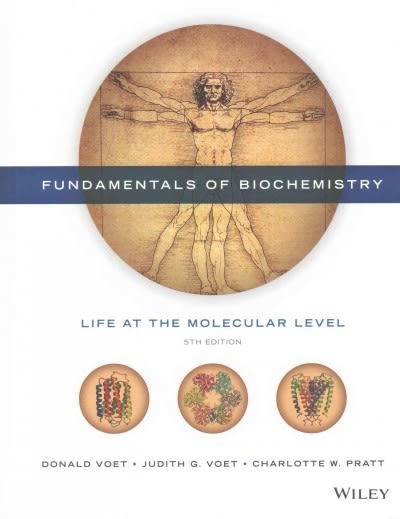Polyoma virus DNA can be separated by sedimentation in an ultracentrifuge at neutral pH into three components
Question:
Polyoma virus DNA can be separated by sedimentation in an ultracentrifuge at neutral pH into three components that have sedimentation coefficients of 20, 16, and 14.5S and that are known as Types I, II, and III DNAs, respectively. These DNAs all have identical base sequences and molecular masses. In 0.15 M NaCl, both Types II and III DNA have melting curves of normal cooperativity and a Tm of 88°C. Type I DNA, however, exhibits a very broad melting curve and a Tm of 107°C. At pH 13, Types I and III DNAs have sedimentation coefficients of 53 and 16S, respectively, and Type II separates into two components with sedimentation coefficients of 16 and 18S. How do Types I, II, and III DNAs diff er from one another? Explain their different physical properties.
Step by Step Answer:

Fundamentals Of Biochemistry Life At The Molecular Level
ISBN: 9781118918401
5th Edition
Authors: Donald Voet, Judith G Voet, Charlotte W Pratt





